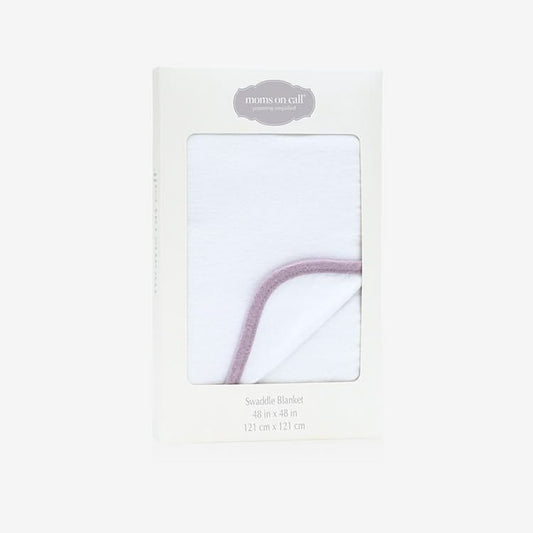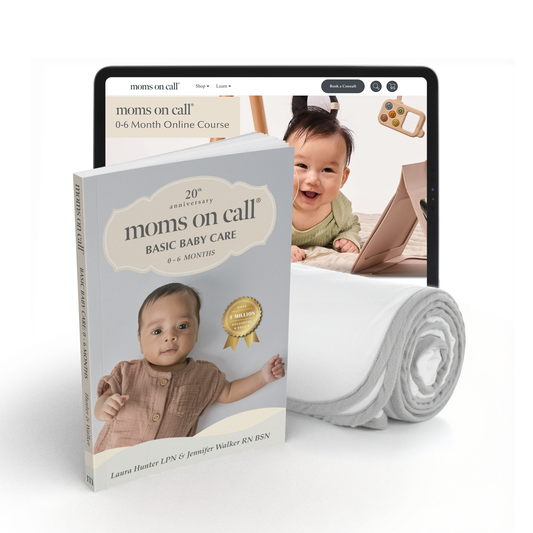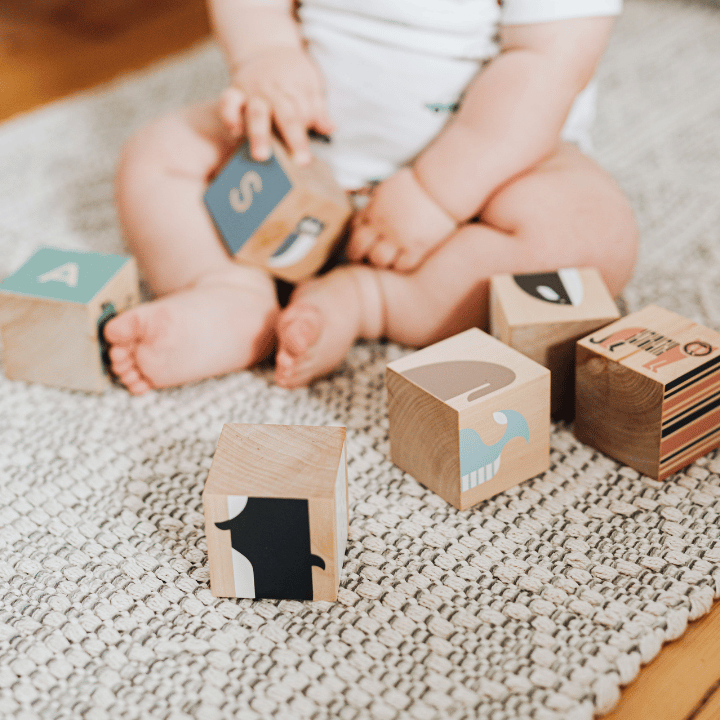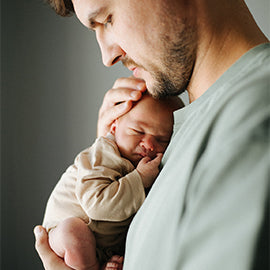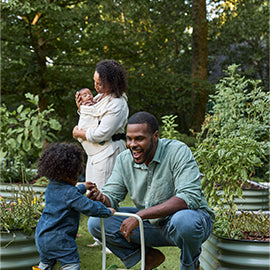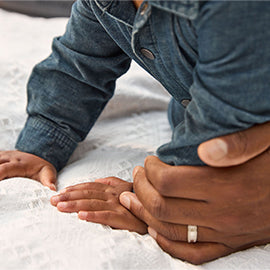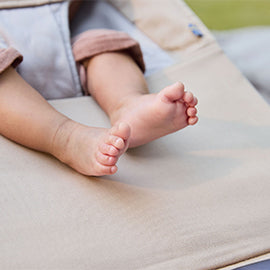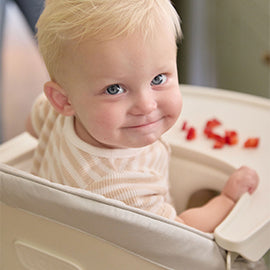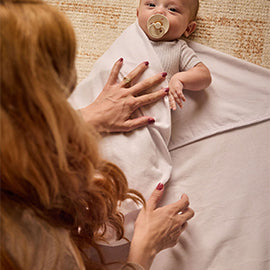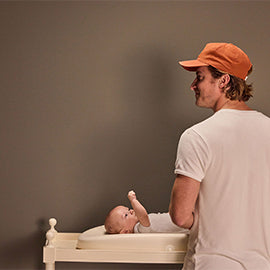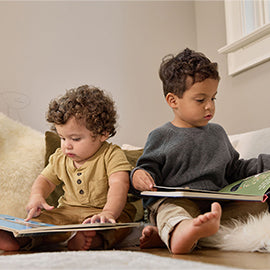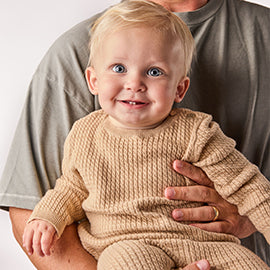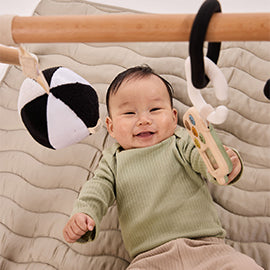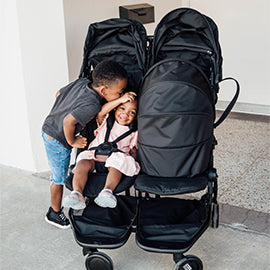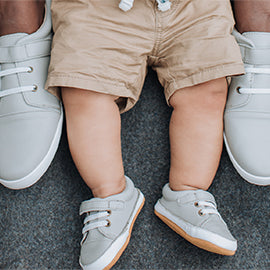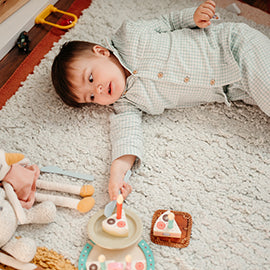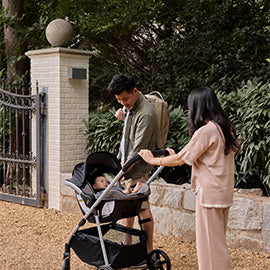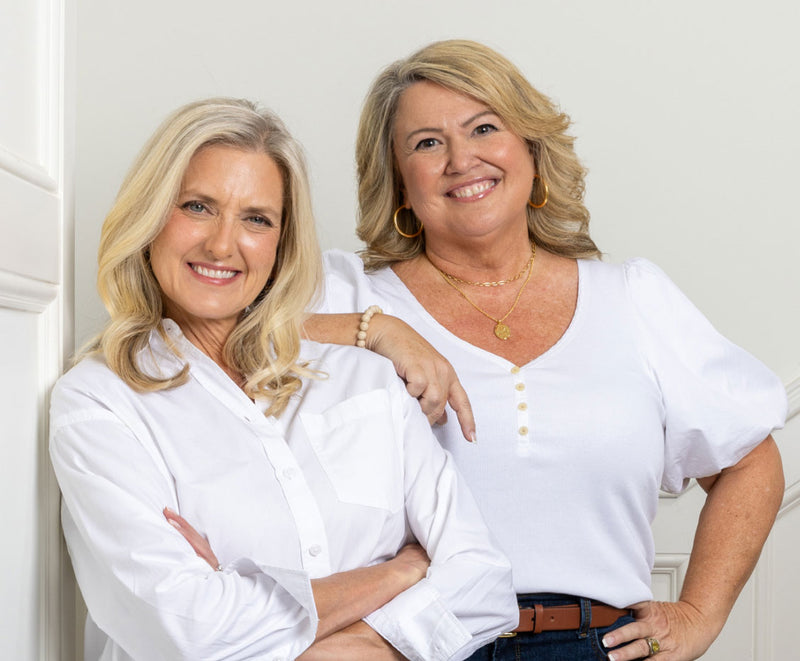Written by Brittany Gartner, founder of Mommy and Me PT I’ll be honest in telling you that baby gear is a really hard topic to talk about as a professional. I always want to be transparent with parents to let them know that baby gear can cause real concerns with development, but I also never want a mom to feel guilty for needing to use baby gear. So, this post is my best attempt to educate you on the topic while still allowing you to give grace to do what you need to do to stay sane!
Have you heard of “container syndrome?” Did you know that PT (and OT) offices are full of babies with “environmental delays” - meaning that babies with no underlying diagnosis are presenting with legitimate motor delays caused by their environment? Most likely, this is attributed to babies not having the opportunity to explore normal movement or practice skills because they are spending much of their day being shuffled from one container to the next.
The marketing is so strong for all types of baby gear and containers like swings, bouncy seats, sit me up seats, exersaucers, jumpers, etc. You can find something to hold your baby in every position imaginable. I want to highlight some key things about these in regards to development and show you how to choose the best baby gear and how to use it appropriately for healthy motor development.
Passive containers
I consider things like swings, bouncy seats and sleepers “passive” containers because your baby basically just lays in them. If you look closely at these, you will notice they all have lots of soft, cushy pillows and fabric to make your baby nice and comfy, right? These containers are perfect for when you need the baby to be contained for a few minutes while you take a shower or cook dinner, but they can come with some disadvantages if you’re not careful. The soft, cozy fabric can put pressure on your baby’s head in non-ideal places, limit your baby’s ability to move his head/neck, decrease free movement of the arms and legs and limit your baby’s ability to visually and physically engage with his environment. Most likely, your baby’s core is turned off, or at least significantly less activated when in these containers - there is no need to activate your tummy when you are fully supported in a scrunched up position. Babies with or at risk for torticollis (tight neck muscles) or plagiocephaly (flat spot on the head) should spend VERY limited amounts of time in these passive containers. Even if your baby doesn’t have those risk factors, I still advise using caution and limited amounts of time. My general recommendation is no more than 15 minutes at a time and no more than 1 hour per day combined in containers. Another important thing to note is to make sure your baby’s body is in good alignment when you put him in the container: head in the middle, trunk lined up, both sides symmetrical, etc. The position you put your baby in is most likely the position she will stay in as long as she’s in the container.
Active containers
I consider things like the Sit Me Up seat, Bumbo, exersaucers, jumpers, etc to be “active” containers because they are geared more toward active skills. The problem arises with these devices when babies are put in them before they are developmentally ready to be put in that position. Unfortunately, that is where marketing of these items can be extremely misleading. Want your baby to learn to sit? Put them in this colorful sitting container. Want your baby to learn to stand or walk? Use this fancy exersaucer or walker. But, here’s the truth: these devices do not actually teach your child ANY of those skills. In fact, putting your baby in a position she isn’t developmentally ready for can actually delay those skills and put unnecessary/harmful pressure on your baby’s spine and hips. Your baby’s body is smart; it knows when a position is hard or inappropriate and it will compensate and recruit other muscles to help find stability. This can lead to muscle imbalances and your baby trying to use the wrong muscles to learn a skill. I will just encourage you to wait until your baby is able to do each skill on his own before putting him in a device that targets that skill. Container Syndrome is a term that was coined as more and more baby containers have come onto the market and babies started getting shuffled from one container to the next throughout the day with decreasing amounts of time spent on the floor. Container Syndrome is a real concern, but it doesn’t have to be when you are aware of the risks and take steps to avoid it. To avoid increased risk of any motor delays, I am outlining a few simple guidelines to help you be informed on baby container use.- Limit use to 15 minutes at a time and no more than an hour per day total for all baby gear. Aim to give your baby at least twice as much floor time in a day as he is in a container.
- Use blanket rolls to position your baby with good head, neck and trunk alignment in both passive and active containers.
- Avoid putting your baby in a container he is not developmentally ready to use (i.e. If your baby is not yet working on sitting, don’t use a sitting container. If your baby isn’t working on standing, don’t use an exersaucer).
- When using sitting containers, make sure your baby’s spine is not rounded with the head either tilting to the side or slumped forward.
- When using standing containers, make sure the feet are flat. Use pillows or books under the feet to achieve this position if needed.
- If you feel like you are having to use a lot of supports or frequently repositioning your baby, chances are they aren’t quite ready for that container. Wait a few weeks and try again.
- I do not ever recommend using a walker (that your baby sits in) or a jumper because it is almost impossible to achieve and maintain good alignment of the hips and feet. These also tend to promote babies being up on the toes, which can anecdotally increase the risk for toe walking later in development.
- Avoid letting your baby sleep for any length of time in a passive container. This can be too much pressure on the head for a prolonged period of time, increasing risk for torticollis and plagiocephaly. Many of these devices are at inclines that are not safe for sleeping. See the AAP Safe Sleep guidelines for more information.
- Never underestimate the power of a great pack n’ play or play yard. These can serve as safe spaces for your baby to be contained while still having the freedom to move around and play.
You can see that using baby containers excessively or inappropriately can significantly impact your baby’s motor development. This is not intended to scare or shame you, but rather to empower and educate you on the best practices when it comes to baby containers. You can absolutely use containers in a safe, appropriate way and still foster normal development when you keep all of these considerations in mind. I would love for you to join the Mommy & Me PT community on Instagram (@mommyandme.pt). My platform is all about providing professional tips + practical tools to help parents be empowered and equipped to foster their child’s motor development! In a world of information overload, my hope is to be a supportive outlet for you as you navigate your parenting journey. I also offer 1:1 virtual consults and have a development & milestone PDF available for purchase -- you can find both of those on my Instagram page.
Brittany has a Doctorate of Physical Therapy and has spent the last 7 years specializing in pediatrics, helping kids of all ages and abilities reach their full gross motor potential. She is a mama of a sassy 2.5-year old and handsome 7-month old. Her passion is educating and empowering parents to be equipped and confident! She has been married to her husband for 6 years and they love watching documentaries and traveling the world. Brittany’s hope is that she can encourage all parents to be advocates for their children and foster their motor development in a practical, low stress way!
